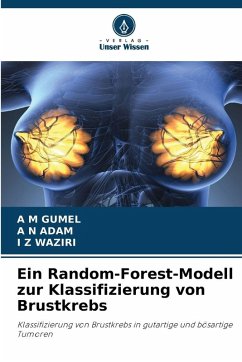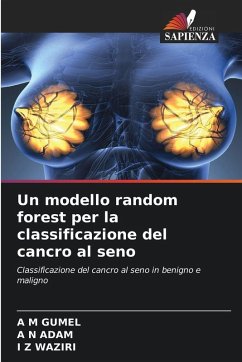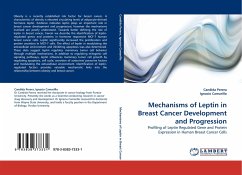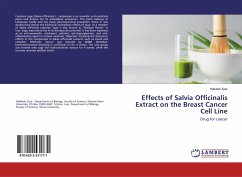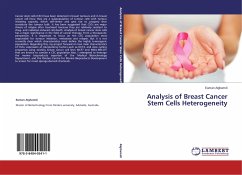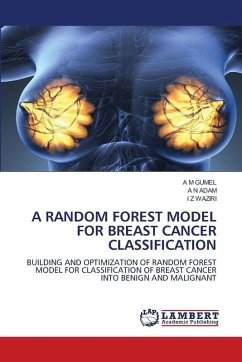
A RANDOM FOREST MODEL FOR BREAST CANCER CLASSIFICATION
BUILDING AND OPTIMIZATION OF RANDOM FOREST MODEL FOR CLASSIFICATION OF BREAST CANCER INTO BENIGN AND MALIGNANT
Versandkostenfrei!
Versandfertig in 6-10 Tagen
29,99 €
inkl. MwSt.

PAYBACK Punkte
15 °P sammeln!
This book highlights on development and optimization of a Random Forest (RF) model to classify breast cancer as benign or malignant using the Wisconsin Breast Cancer Dataset. After preprocessing 569 samples (357 benign, 212 malignant), a default RF model achieved 95.61% accuracy. To improve results, hyperparameter tuning via Grid Search was applied, adjusting parameters such as number of trees (150), max depth (None), min samples split (2), min samples leaf (1), and random seed (123). The optimized RF model achieved 99.12% accuracy, precision, recall, and F1-score, outperforming other methods ...
This book highlights on development and optimization of a Random Forest (RF) model to classify breast cancer as benign or malignant using the Wisconsin Breast Cancer Dataset. After preprocessing 569 samples (357 benign, 212 malignant), a default RF model achieved 95.61% accuracy. To improve results, hyperparameter tuning via Grid Search was applied, adjusting parameters such as number of trees (150), max depth (None), min samples split (2), min samples leaf (1), and random seed (123). The optimized RF model achieved 99.12% accuracy, precision, recall, and F1-score, outperforming other methods like SVM, XGBoost, and prior RF implementations. Results show reduced false negatives and no false positives, indicating high sensitivity and specificity. The work underscores the value of meticulous hyperparameter tuning in medical AI applications and suggests future integration with neural networks and hybrid models for enhanced performance in clinical breast cancer diagnosis.



